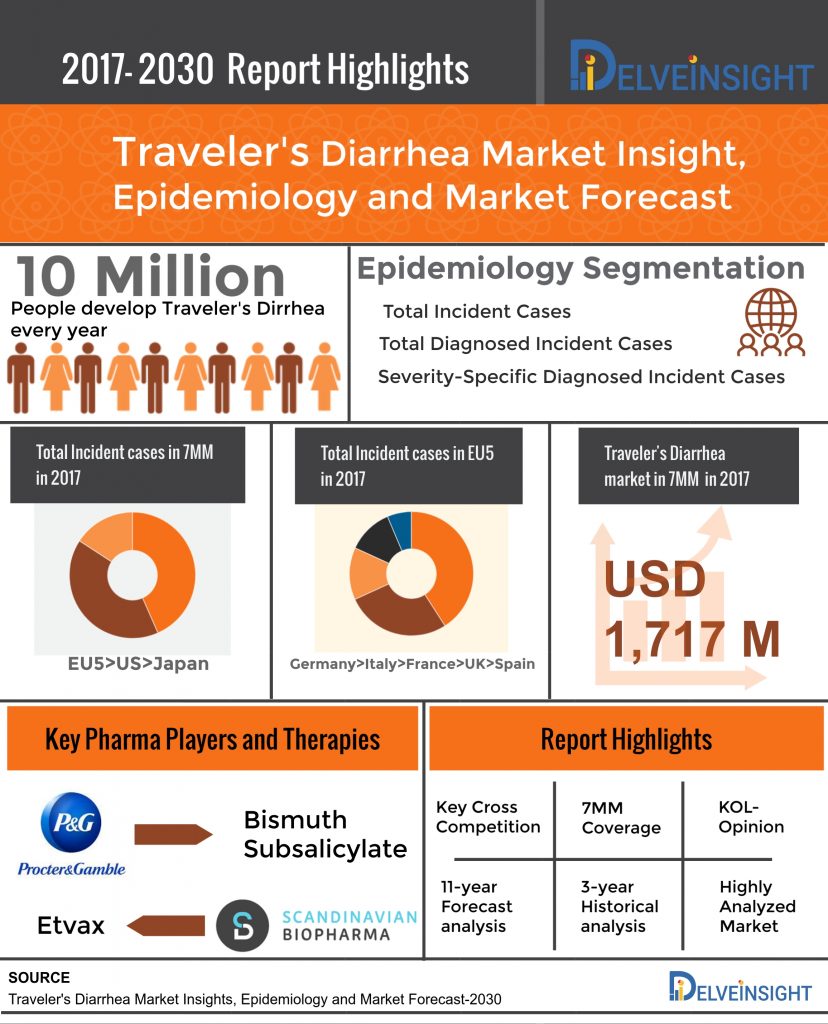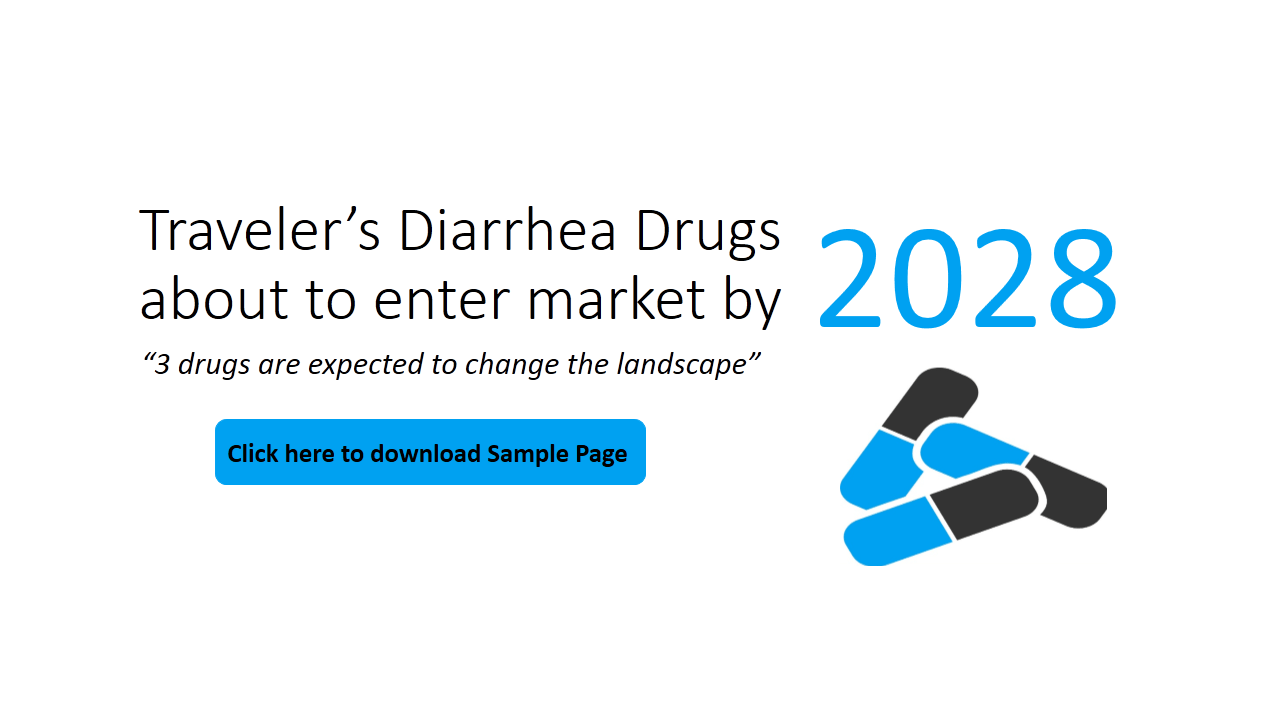Global Traveler’s Diarrhea Market
Mar 29, 2019
Traveler’s Diarrhea (TD) is an intestinal infection, a digestive tract disorder that is caused by a variety of pathogens but most commonly by bacteria found in food and water, often related to poor hygiene practices. Being the most predictable disease, around 30% to 70% of the travelers are found to suffer from it. TD is defined as unformed stools in 24 hours accompanied by at least 1 of the following: fever, nausea, vomiting, cramps, tenesmus, or bloody stools (dysentery), in a traveler from a developed country visiting a less developed country. It is usually a benign self-limited illness lasting 3 to 5 days (mean 3.6 days). It is not that serious but repulsive.
Traveler’s Diarrhea Etiology
Travelers’ diarrhea is caused by a variety of pathogens but the most common bacteria is found in food and water, often related to poor hygiene practices in local restaurants. Enterotoxigenic Escherichia coli (ETEC) accounting for 30% of the cases and other bacteria causing Traveler’s diarrhea are the species of Campylobacter
TD results in some of the unpleasant symptoms like loose stools, mild cramps, vomiting, nausea, fever, and bloody diarrhea. Although with pathogens the symptoms vary on the basis of severity, prominence and incubation period.
Total Traveler’s Diarrhea Incident Population
As per DelveInsight’s estimates, in 2017 only the European 5 countries and the US accounted for about 43.4% and 40.77% of the total Traveler’s diarrhea Incident cases out of all the TD cases in 7 major markets.
The total 7Major Markets (the U.S., EU5 and Japan) Traveler’s Diarrhea incident population in 2017 was 40,884,599, out of which the highest incident cases of this disease were seen in the United States, which accounted for approximately 41.0% of the total incident cases. The EU5 countries accounted for 17,742,120 cases as a whole in 2017. Japan had 6,474,064 cases in 2017, which accounted for approximately 16.0% of the total 7MM incident cases of Traveler’s Diarrhea. The total incident of Traveler’s Diarrhea in Germany is expected to increase at a CAGR of 1.8% for the study period of 2017-2028 and of Spain at a CAGR of approximately 2.0%.
Downloads
Article in PDF
Traveler’s Diarrhea Market Size
The total Traveler’s diarrhea market size (both emerging and current therapies) was USD 1,717 Million in 2017. The United States accounts for the largest Traveler’s Diarrhea market size, in comparison to EU5 (the United Kingdom, Germany, Italy, France, and Spain) and Japan owing to the largest number of incident population.

The Traveler’s diarrhea treatment therapies comprise of oral hydration which includes replenishment of fluids and diet modification strategy involving compounds rich in carbohydrates such as rice, bread, potatoes, bananas, etc. followed by Anti-motility drugs or Antidiarrheal drugs (also known as symptomatic therapy). Anti-motility agents are the most common treatments that include bismuth
Antibiotics, anti-motility drugs (for symptomatic relief) and Dukarol (Vaccine) are extensively being used as an off label therapy. The current market also holds a single approved therapy Xifaxan by Salix Pharmaceuticals.
The approval of Fast Track and QIDP designation holder Aemcolo/Relafalk by Cosmo Pharmaceuticals the late-stage product Bismuth Subsalicylate and Etvax-a vaccine against diarrheal disease are some of the emerging therapies for TD.
There exists preventive measures as well majorly categorized into immunization, avoidance, non–pharmacological therapy, and antibiotic prophylaxis. Precautions to minimize the risk of developing traveler’s diarrhea, either through avoidance of potentially contaminated food or drink or through various prophylactic measures, including both non-pharmacological and antimicrobial strategies can be taken.
Downloads
Article in PDF



